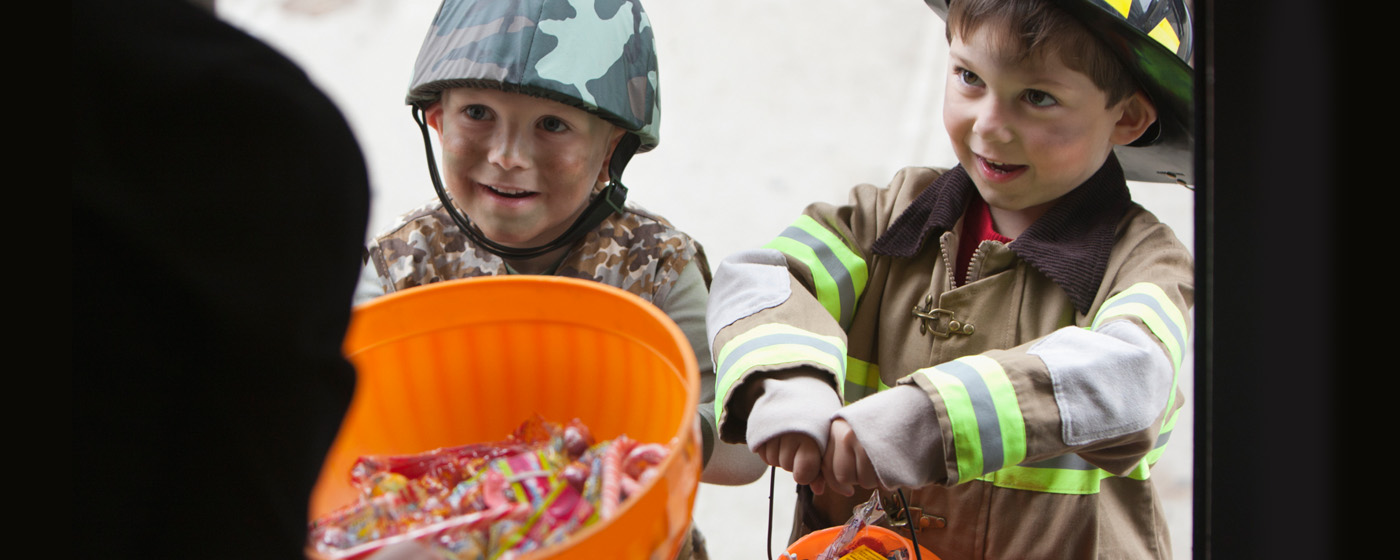Food and divination: Halloween
The Celts celebrated Samhain on 31 October. This festival marked the end of the harvest season and of the year, a key moment when the living and the dead joined together. In the Middle Ages, the Catholic calendar aligned with pagan festivals: Samhain became Halloween, but Celtic divinatory practices lived on in the form of games.
The origins of Halloween
The origins of Halloween lie in Celtic paganism. The Celtic year was divided into two main periods: winter and summer. Samhain, meaning ‘the end of summer’, was celebrated on 31 October, the eve of the first day of the new year. It marked the end of the harvest and the transition between the two seasons. The Celts believed that, over the course of this night, the souls of those who had died during the year travelled to the afterlife and that evil spirits came out of their hiding places to cause mischief among the living. This was the ideal moment for divination: Druids told fortunes, people lit bonfires and wore animal skins.
Three festivals corresponded to Samhain during the Roman Empire. The first, Feralia, commemorated the dead. The second, Pomona, celebrated the goddess of fruit. During the third, Lemuria, spirits were driven from people’s homes.
Later on, these Christian festivals aligned with those of the conquered populations to facilitate their evangelisation. Samhain became Halloween with the conversion of the Celts to Christianity during the first centuries of the Common Era. The first day of the Celtic year became All Hallows’ Day and Samhain was renamed All Hallows’ Eve which later became Halloween.
Halloween was especially celebrated in Brittany and the British Isles and it was not until the latter half of the 19th century that it began to spread across the United States. The Irish immigrants who fled there to escape the Great Famine of 1846 took their traditions with them. In little over a century, judging by the amount of money involved, Halloween has become the third most popular American celebration after Christmas and Easter (in 2015, $6.9 billion were spent on Halloween, including $2.1 billion on confectionery).
Food and divination: toffee apples and potatoes
Games played at Halloween in Anglo-Saxon countries recollect Celtic divinatory practices.
In Wales, the traditional meal of stwmp naw rhyw is a ‘Mash of Nine Sorts’: potatoes, carrots, turnips, peas, parsnips, leeks, salt, pepper and fresh milk. A ring is hidden in the mash and whoever finds it will be the first to get married.
Apple bobbing is a game in which players try to catch hold of an apple with their teeth as it floats in a bowl of water. This game originated from the festival of the Roman goddess Pomona. The Celts associated the apple tree with life hereafter. In the past, the winner of the game was promised marital bliss. Today, in the British Isles, it is a game which children play on the evening of 31 October.
In former times, to see the face of their future sweetheart in a dream, Scottish girls had to devour a salted herring in three mouthfuls, while Irish girls would place the first and last spoonful of colcannon (mashed potato, cabbage, onions and butter) with seven ivy leaves under their pillow.
The saying trick or treat’ called out by children today dates back to the beginning of the Christian era. At that time, people placed food on their doorstep to appease the suffering souls of the deceased and to ensure they continued on their way. The custom of wearing fancy dress allegedly originates from an Irish belief that people should hide their faces and turn their clothes inside out before venturing outside in the evening, the time when spirits walked the Earth.
The pumpkin
In Ireland, people used swedes to make Halloween lanterns, by hollowing them out and carving the shape of a face. Pumpkins replaced swedes in the United States.
CRÉTIN, Nadine, 2015. Fêtes de table et traditions alimentaires. Paris : Le Pérégrinateur éditeur. ISBN 9782910352646.
MARKALE, Jean, 2000. Halloween, histoire et traditions. Paris : Éditions Imago. ISBN 978 2911416392
WALTER, Philippe, 2011. Mythologie chrétienne : fêtes, rites et mythes au Moyen Àge. Paris : Éditions Imago. ISBN 978 2849521168.
GIRAUDON, Daniel. s.d.. Samhain, Halloween. La nuit des jeux et des esprits en Bretagne et pays celtiques. Traditions Populaires de Bretagne - Gizioù ar bobl e Brezh [en ligne]. [Consulté le 07 mars 2016.] Disponible à l'adresse : http://danielgiraudon.weebly.com
REYNOLDS, Treacy. 2015. NRF: 157 Million Americans Will Celebrate Halloween This Year. National Retail Federation [en ligne]. 23 septembre 2015. [Consulté le 08 mars 2016.] Dispinible à l'adresse : https://nrf.com




